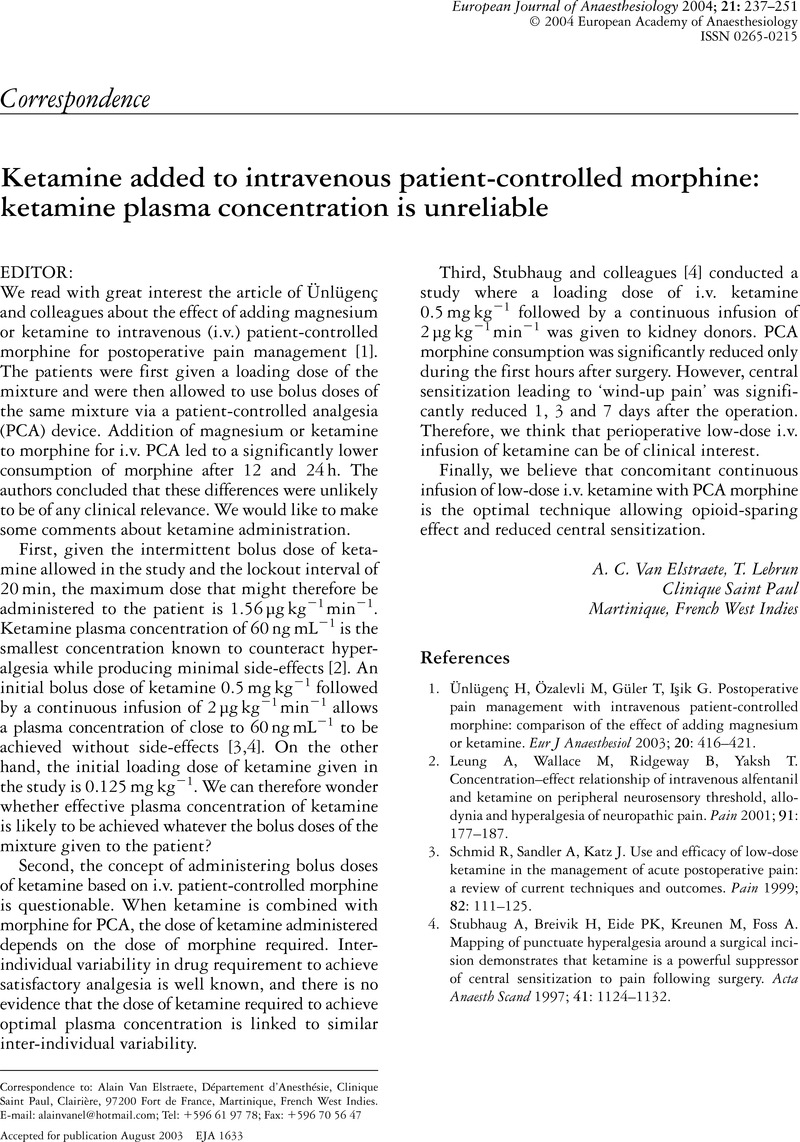No CrossRef data available.
Article contents
Ketamine added to intravenous patient-controlled morphine: ketamine plasma concentration is unreliable
Published online by Cambridge University Press: 23 December 2004
Abstract
An abstract is not available for this content so a preview has been provided. Please use the Get access link above for information on how to access this content.

- Type
- Correspondence
- Information
- Copyright
- 2004 European Society of Anaesthesiology
References
Ünlügenç H, Özalevli M, Güler T, Işik G. Postoperative pain management with intravenous patient-controlled morphine: comparison of the effect of adding magnesium or ketamine. Eur J Anaesthesiol 2003; 20: 416–421.Google Scholar
Leung A, Wallace M, Ridgeway B, Yaksh T. Concentration–effect relationship of intravenous alfentanil and ketamine on peripheral neurosensory threshold, allodynia and hyperalgesia of neuropathic pain. Pain 2001; 91: 177–187.Google Scholar
Schmid R, Sandler A, Katz J. Use and efficacy of low-dose ketamine in the management of acute postoperative pain: a review of current techniques and outcomes. Pain 1999; 82: 111–125.Google Scholar
Stubhaug A, Breivik H, Eide PK, Kreunen M, Foss A. Mapping of punctuate hyperalgesia around a surgical incision demonstrates that ketamine is a powerful suppressor of central sensitization to pain following surgery. Acta Anaesth Scand 1997; 41: 1124–1132.Google Scholar


